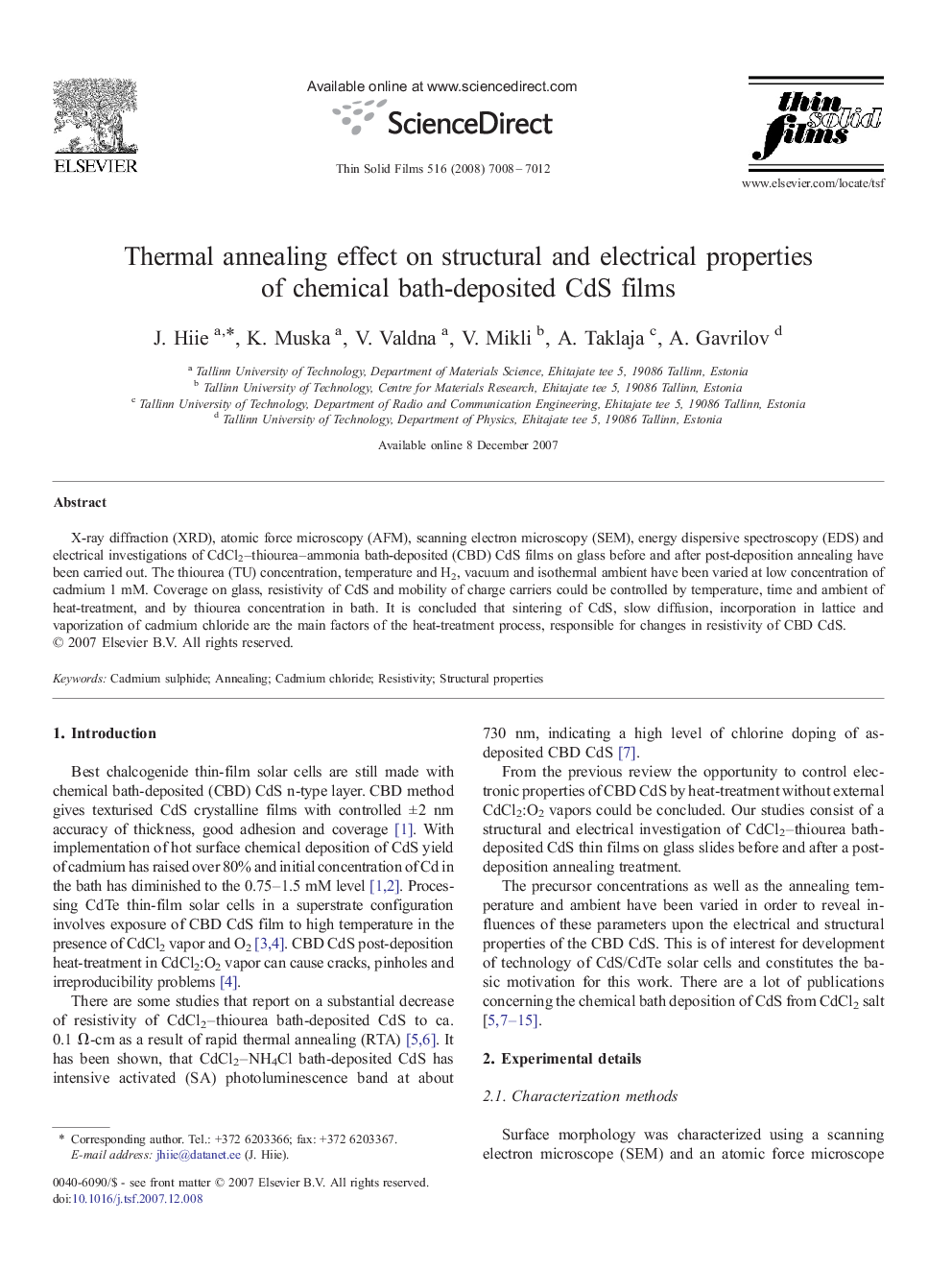| Article ID | Journal | Published Year | Pages | File Type |
|---|---|---|---|---|
| 1674462 | Thin Solid Films | 2008 | 5 Pages |
X-ray diffraction (XRD), atomic force microscopy (AFM), scanning electron microscopy (SEM), energy dispersive spectroscopy (EDS) and electrical investigations of CdCl2–thiourea–ammonia bath-deposited (CBD) CdS films on glass before and after post-deposition annealing have been carried out. The thiourea (TU) concentration, temperature and H2, vacuum and isothermal ambient have been varied at low concentration of cadmium 1 mM. Coverage on glass, resistivity of CdS and mobility of charge carriers could be controlled by temperature, time and ambient of heat-treatment, and by thiourea concentration in bath. It is concluded that sintering of CdS, slow diffusion, incorporation in lattice and vaporization of cadmium chloride are the main factors of the heat-treatment process, responsible for changes in resistivity of CBD CdS.
